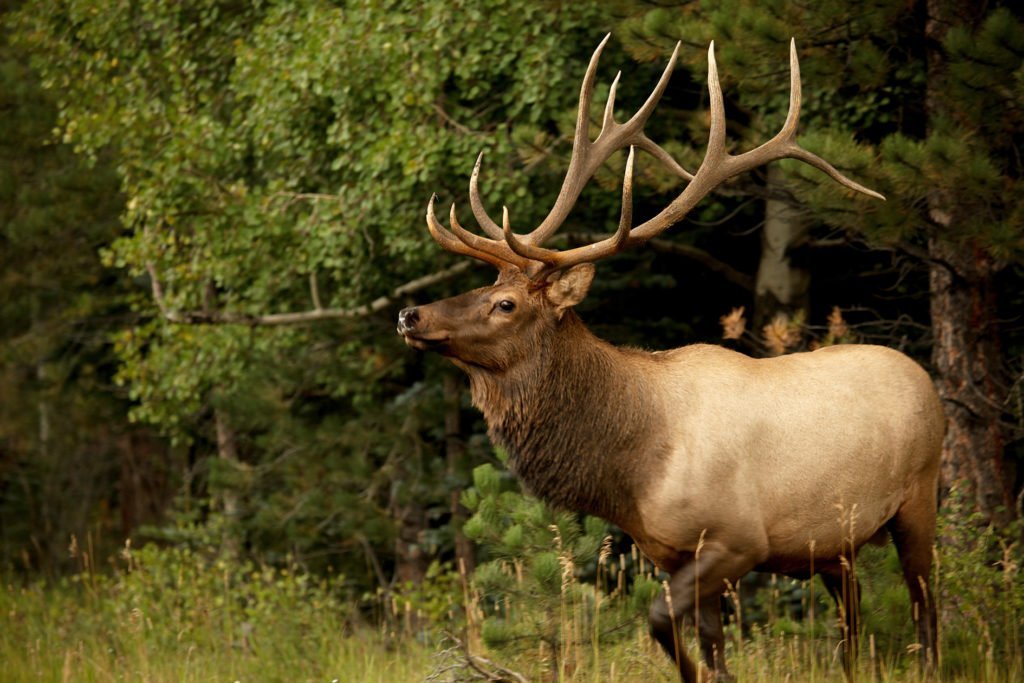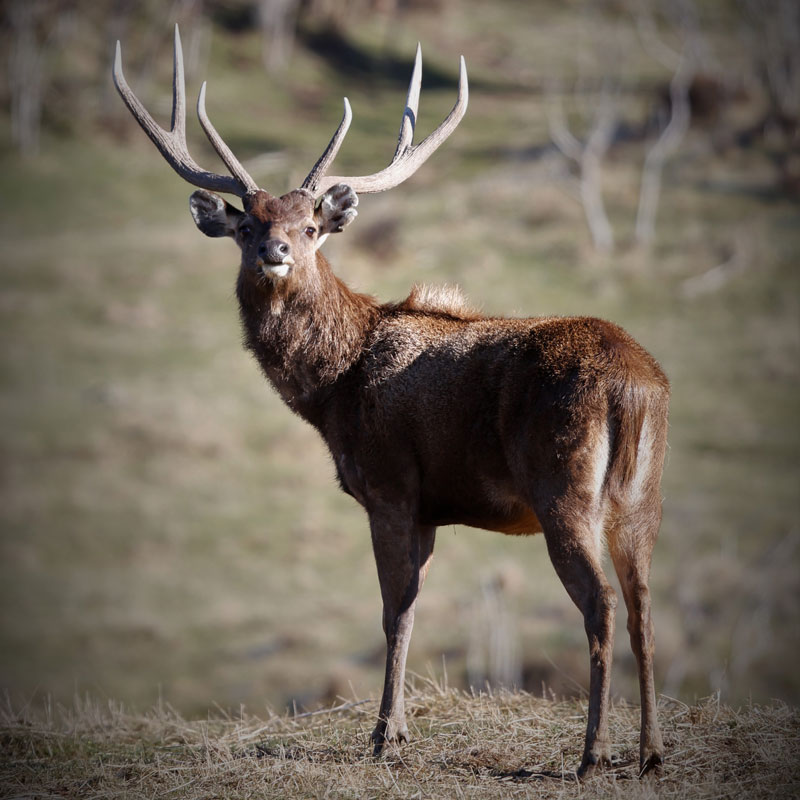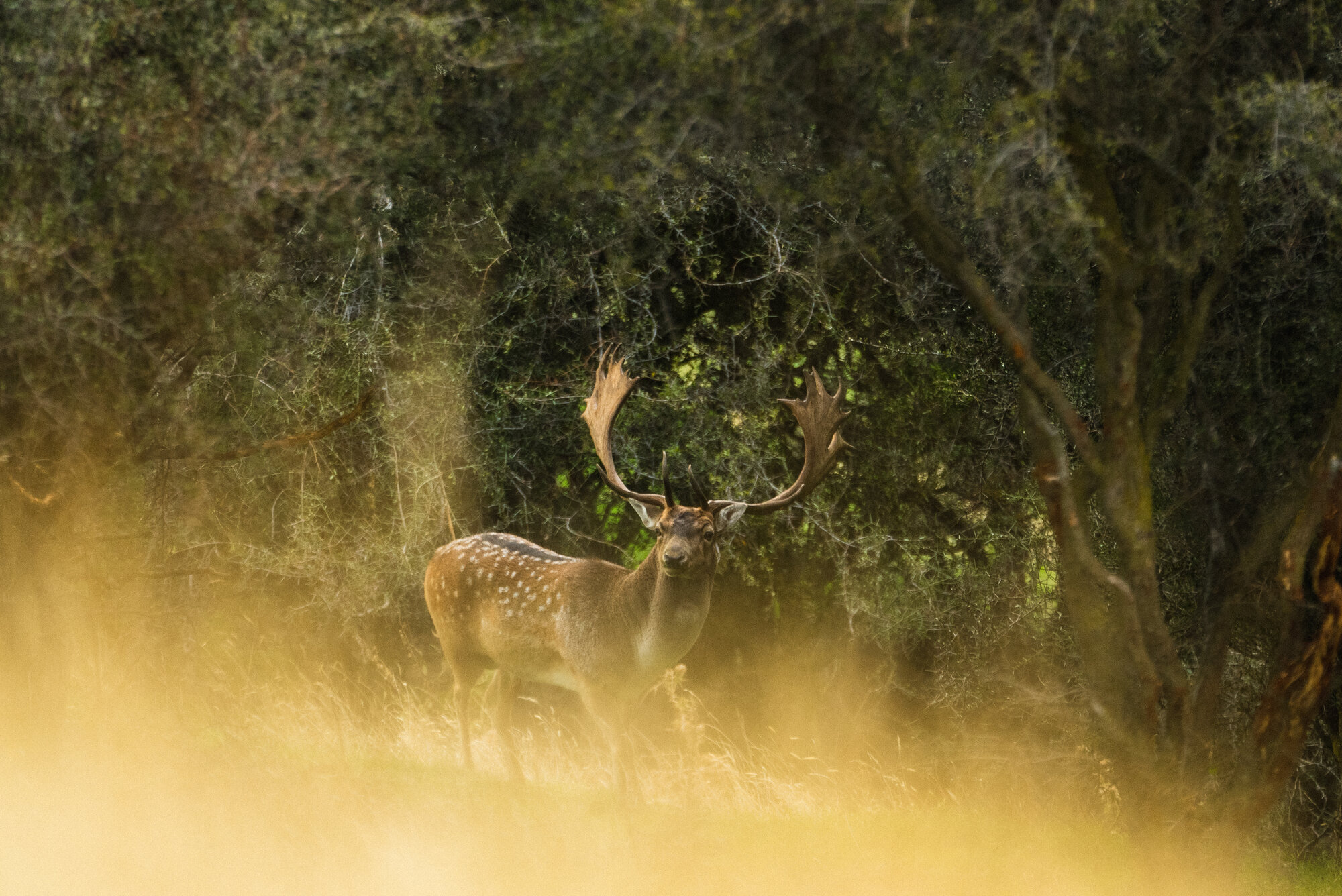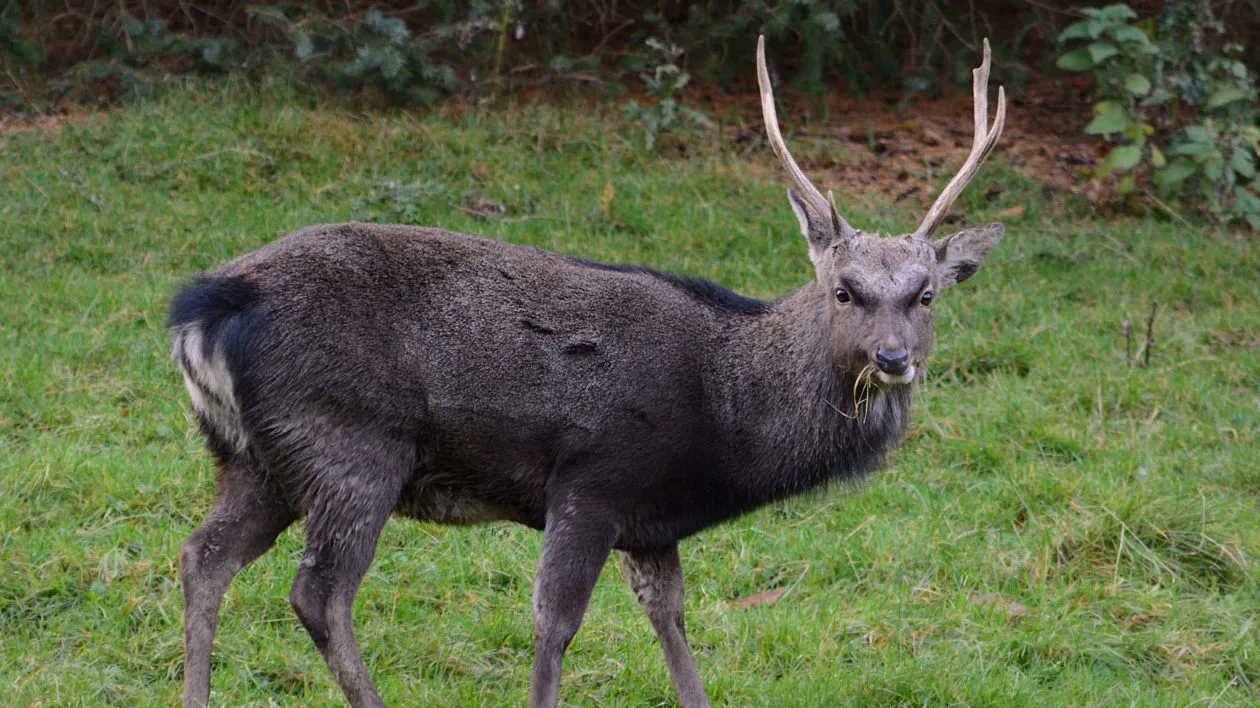
The hunting of deer for sport and their prized trophy heads was the initial motivation for importing and releasing deer in New Zealand by the early colonial settlers from the United Kingdom, who emigrated seeking land and fortune in the undeveloped lands of the new colony.
The first arrival was a red deer stag (Cervus elaphus) from the Royal Park in Richmond, which was released in Nelson in April 1854.
Three more red deer from Thorndon Hall arrived in 1861 and were supplemented with animals from Warnham and Windsor Parks.
New Zealand's first hunting licences were subsequently issued in Nelson in 1882. To survive the long journey to New Zealand, the deer were crated and fed on clover, hay and carrots during their two-month ocean journey.
Between 1861 and 1919, more than 250 were brought to New Zealand directly from the UK via Australia. This continued until 1926, with the majority coming from the great English Parks and from the Scottish Highlands.
Of all the deer species (Cervidae family) introduced, red deer (Cervus elaphus) proved to be the most successful at assimilating into their newfound environment of New Zealand.
As transportation procedures became perfected, red deer were introduced with rapid success across all the main forested areas of New Zealand from Auckland in the North Island to Stewart Island, off the southern coast of the South Island.
Such was the success of the introduction of red deer to New Zealand that in 1913, Warnham Park imported six hinds from Lake Hawea back to the UK to improve its own genetic stock.
Finding the environment of New Zealand much to its liking, red deer (Cervus elaphus) soon colonised every available patch of habitat, particularly inaccessible mountain valleys, where it remained undisturbed for decades and a significant population remains today.
%2520(1).jpeg)
Red Deer (C. elaphus) are the most widespread deer species in New Zealand and the fourth-largest extant deer species, behind the Moose, Elk, and Sambar deer. Introduced by acclimatisation societies along with other deer and game species initially to the Nelson region at the top of the South Island (see above). The first red deer to reach the North Island were a gift to Sir Frederick Weld from Windsor Great Park and were released near Wellington. Between 1851 and 1926, 220 separate introductions of red deer involved over 800 deer. Some hybridisation happened with the closely related American elk (Cervus canadensis nelsoni) that were introduced to Fiordland in 1921. New Zealand red deer produce very large antlers and are regarded by discerning hunters as the best deer antlers in the world.

Wapiti (Cervus canadensis ) known as elk in North America, the largest of all round-horned deer, was introduced into George Sound, in Fiordland, by the New Zealand Tourist Department in 1905 when 18 animals of the Cervus elaphus nelsoni (now called Cervus canadensis nelsoni) species were released at the head of George Sound, Fiordland and became quickly established. Ten of these animals were a gift from American President Theodore Roosevelt, and the balance were purchased by the New Zealand government. Earlier introductions to other sites in New Zealand were unsuccessful.
In 1923, the first hunting licenses for Wapiti were issued. As interest grew and the herd spread, more blocks were made available. By the 1950’s, demand was so great that the blocks were opened to a ballot system. Today, there are 25 blocks that attract hundreds of applicants each year.

Rusa (C. timoriensis), native to the islands of south-east Asia, were liberated in the Ikawhenua foothills, near Murupara. Rusa are the least widely distributed of all of the recognised deer species in New Zealand. There is no seasonal restriction to hunting rusa Deer meaning they can be hunted throughout the year. There are however, instances where restrictions apply for specific reasons. The Roar (July to the August) and Spring are the most another favorable times of the year to hunt Rusa deer. During spring, deer can be seen coming out of the forest to feed on new grass and shrub growth.

Sambar (C. unicolor), a large and cunning beast from India and Sri Lanka were introduced to Manawatu in 1875. In New Zealand, Sambar deer are only found in the North Island. The two main populations of wild Sambar deer are found in the Manawatu/Wanganui region and the Bay of Plenty region. They range mostly on private land which is predominantly forestry blocks. Sambar occupy a variety of habitats from indigenous and exotic forests to wetlands and farmland. The rut extends over a period from late May to December with Spring being another favourable time of the year to hunt Sambar. During spring, Sambar can be seen coming out of the forest to feed on new grass and farm crops.

European Fallow Deer (Dama dama) Fallow were introduced into New Zealand from 1864, with 26 different introductions taking place. While not a large in size they are very aggressive and during the rut they will often fight to the death and have been known to kill red stags. The Fallow Buck rut is in early April and finishes in May. Unlike the Red Stag that roar when issuing their challenge, Fallow Buck make a grunt or croaking sound. Fallow come in a variety of colours including black, chocolate, spotted (menil) and white. A good buck will have palmate antlers. They are the second most hunted deer in New Zealand.

Japanese sika (C. nippon), originate in New Zealand from a single release of six animals at Merrylees Clearing in the Kaimanawa Range in 1905, gifted by the Duke of Beford. Sika have a reputation for being among the most cunning of deer and is well-deserved. Sika stags exude attitude and are a highly vocal species, with over 10 individual sounds, ranging from soft whistles to loud screams. They and grow a classic eight-point trophy in a four by four formation. They are extremely vocal during the rut, which runs from start to the end of April.

American Whitetail Deer (Odocoileus virginianus), a medium-sized deer native to North America, Central America, and South America as far south as Peru and Bolivia was colonised in Stewart Island, New Zealand's southern most inhabited island. The American White Tail's liberation in New Zealand can be traced to the World Fair of 1904 held in St. Louis, Missouri. Reportedly, a herd had been trapped in snow in New Hampshire and taken to St. Louis where President Theodore Roosevelt decided to gift some of this herd of Whitetail Deer to New Zealand. Sometime in late 1904 or early 1905, 22 animals were sent via boat to the South Island of New Zealand. Of the 22 deer on the ship, 18 of them survived the journey (four bucks and 14 does). Nine were sent to Pegasus Sound, Stewart Island with the remaining nine sent to the Rees Valley, near Queenstown in the lower South Island.
These two main herds still exist as well as some other smaller herds of New Zealand whitetail that inhabit private land in the South Island.
While all these species have established populations in various different regions New Zealand, none have matched the tenacity and phenomenal adaptability of the red deer( C. elaphus). Within only a few decades of the introduction of red deer to New Zealand stags began sporting much longer and more impressive antlers than their UK forefathers.
An early example of the prowess of New Zealand as a red deer trophy hunting destination can be circled back to the early 1920s. Typically, none of the 120 best British red deer trophies at the Wembley Exhibition of 1924 exceeded 40 inches (102cm in length), while New Zealand listed 62 stags measuring over 40 inches in one year alone for the same period.
From these early origins, New Zealand continues to produce some of the most prized red stag trophies and of many Safari Club International SCI World Records for red deer.
.jpeg)
Venator is proud to hold claim to a number of these past and present SCI World Records with scores of over 950+ SCI Points* being recorded in the 2023 season (*pending ratification by SCI).
Keep reading our journal entries.

Brian Bailey hunted with Venator New Zealand to pursue world record Red Stags, aiming to break 1000 SCI. Over four methods of harvest – rifle, bow, crossbow, and muzzle loader – three new record stags were taken. Venator combines ethical hunting, unparalleled experiences, and sustainable practices for unforgettable adventures.

For over three decades, the Fraser family and Venator have defined record Red Stag hunting in New Zealand. From the historic 1991 pursuit guided by Duncan’s uncle to the 2023 Kings Slam, hunters have achieved world-class trophies using rifle, bow, crossbow, and muzzleloader. Our legacy of record-setting hunts reflects skill, heritage, and the pursuit of unforgettable adventures in some of the Southern Hemisphere’s most breathtaking landscapes.

Mark Peterson, founder of the Outdoor Guardian Fund and WTA, joined Venator in pursuit of the New Zealand Game Bird Grand Slam. Guided by our expert team, he completed the rare challenge across diverse landscapes and species, from pheasant to paradise shelduck. His experience reflects Venator’s passion for world-class hunting, conservation, and the pursuit of excellence in every adventure.